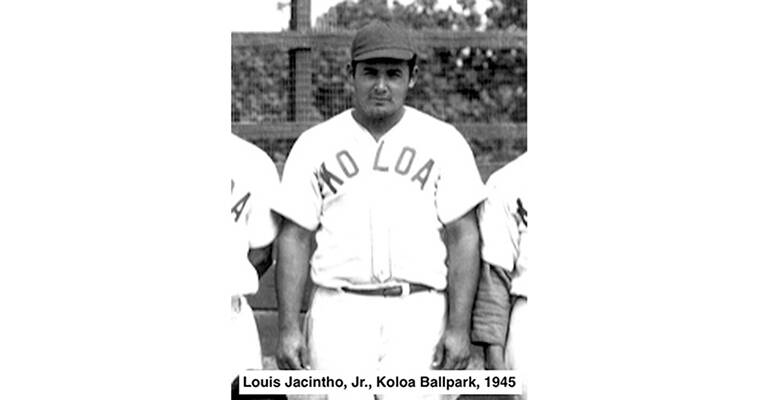Louis Jacintho, Jr. (1924-2008), the son of Louis Jacintho Sr. and Rita Jacintho, was born in Koloa Sugar Co.’s Portuguese Camp, once located about a one-half mile east of Koloa town along the road leading toward the sugar mill.
From age 12, while attending Koloa Grammar School, he worked part time during summer vacations hoeing weeds at Koloa Sugar Co.
And, following his graduation from Koloa School, he enrolled at Kauai High School for a year before becoming a full-time employee at Koloa Sugar at the age of 15 in 1939.
His first full-time job at Koloa Sugar was milking cows by hand at Koloa Dairy, about a one-quarter mile further east of Portuguese Camp.
He then worked at picking up small cane off railroad tracks before being promoted to locomotive brakeman in 1943.
In 1946, while working as fireman on a locomotive hauling 54 loaded cane cars downhill, the train crashed, which cracked his skull and broke his arm and foot.
Fortunately, he recovered following a regimen of penicillin and surgery performed by Dr. Ralph Cloward at Queens Hospital, in which a silver plate was inserted in his head.
Next, he went to work delivering groceries to plantation residents from the Koloa Plantation Store, where the Koloa Big Save now stands.
In 1948, when Grove Farm acquired Koloa Sugar Co., Jacintho began driving a Euclid truck hauling rocks and dirt during the conversion of Koloa’s railroad beds into wider haul cane truck roads.
He and his Euclid were also put to work hauling debris during the carving out of the Ha‘upu Range Tunnel, completed in 1949.
Later, he became a crew chief in Grove Farm’s herbicide department, and later still, the irrigation ditchman for Grove Farm’s Koloa cane fields.
A year after McBryde took over Grove Farm in 1974, Jacintho was promoted to irrigation supervisor of the Mahaulepu cane fields.
He retired from McBryde in 1986.
Jacintho was also a vocalist with big band leader Charlie Kaneyama and his “Merrie Melodiers.”
Louis Jacintho Jr. and his wife, Sayoko Jacintho, had three children: Dennis, Doreen and Delia.



Always fascinating to hear about early island life, Mahalo!